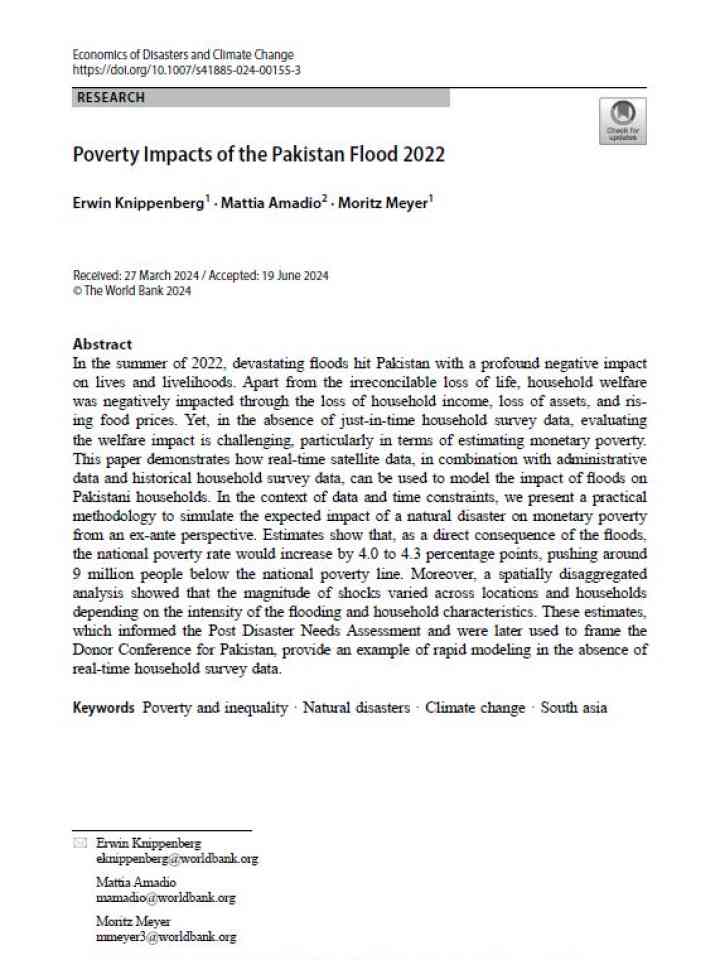Poverty impacts of the Pakistan flood 2022
This paper demonstrates how real-time satellite data, in combination with administrative data and historical household survey data, can be used to model the impact of 2022 floods on Pakistani households. In the summer of 2022, devastating floods hit Pakistan with a profound negative impact on lives and livelihoods. Apart from the irreconcilable loss of life, household welfare was negatively impacted through the loss of household income, loss of assets, and rising food prices. Yet, in the absence of just-in-time household survey data, evaluating the welfare impact is challenging, particularly in terms of estimating monetary poverty.
In the context of data and time constraints, the authors present a practical methodology to simulate the expected impact of a disaster on monetary poverty from an ex-ante perspective. Estimates show that, as a direct consequence of the floods, the national poverty rate would increase by 4.0 to 4.3 percentage points, pushing around 9 million people below the national poverty line. Moreover, a spatially disaggregated analysis showed that the magnitude of shocks varied across locations and households depending on the intensity of the flooding and household characteristics. These estimates, which informed the Post Disaster Needs Assessment and were later used to frame the Donor Conference for Pakistan, provide an example of rapid modeling in the absence of real-time household survey data.
Explore further

